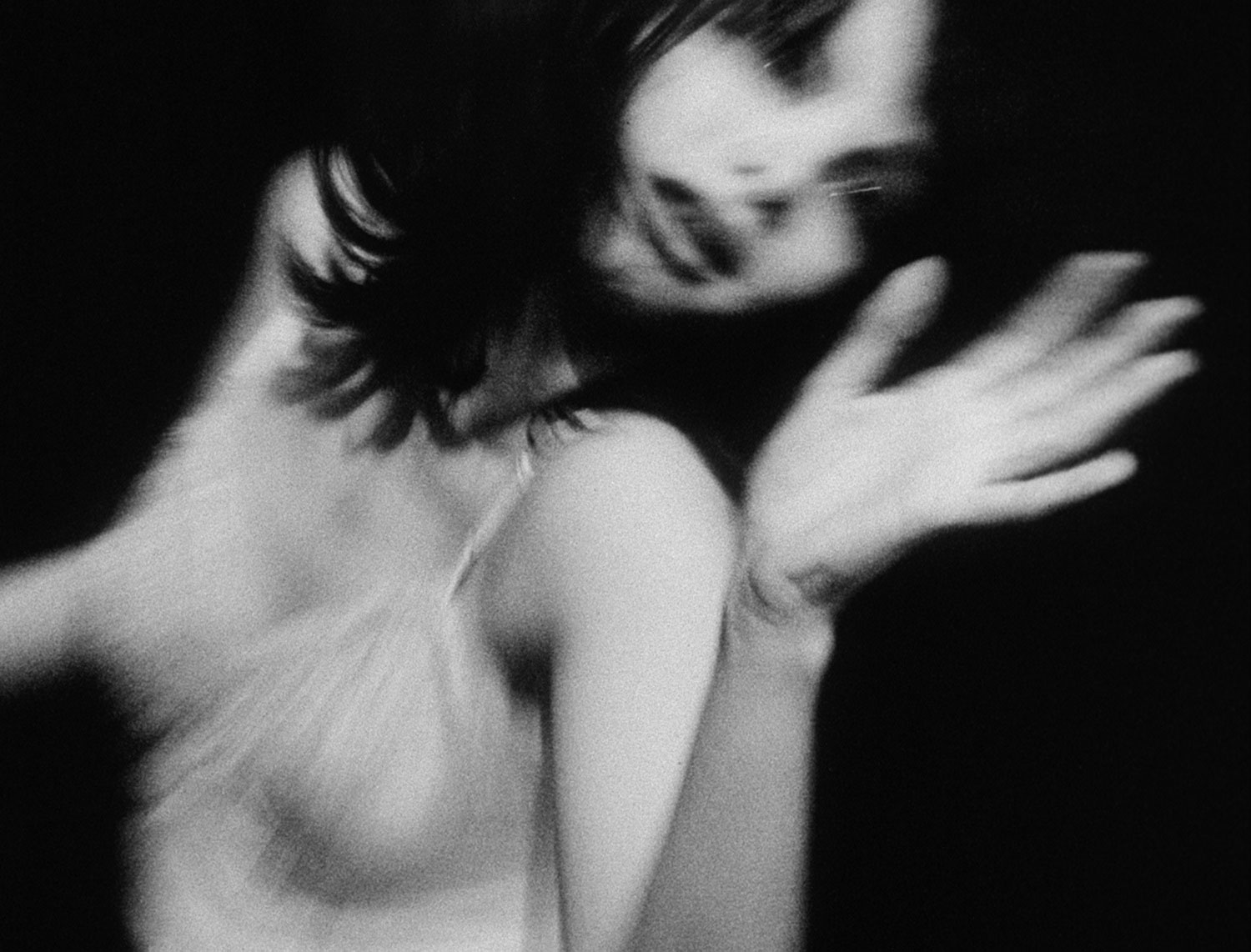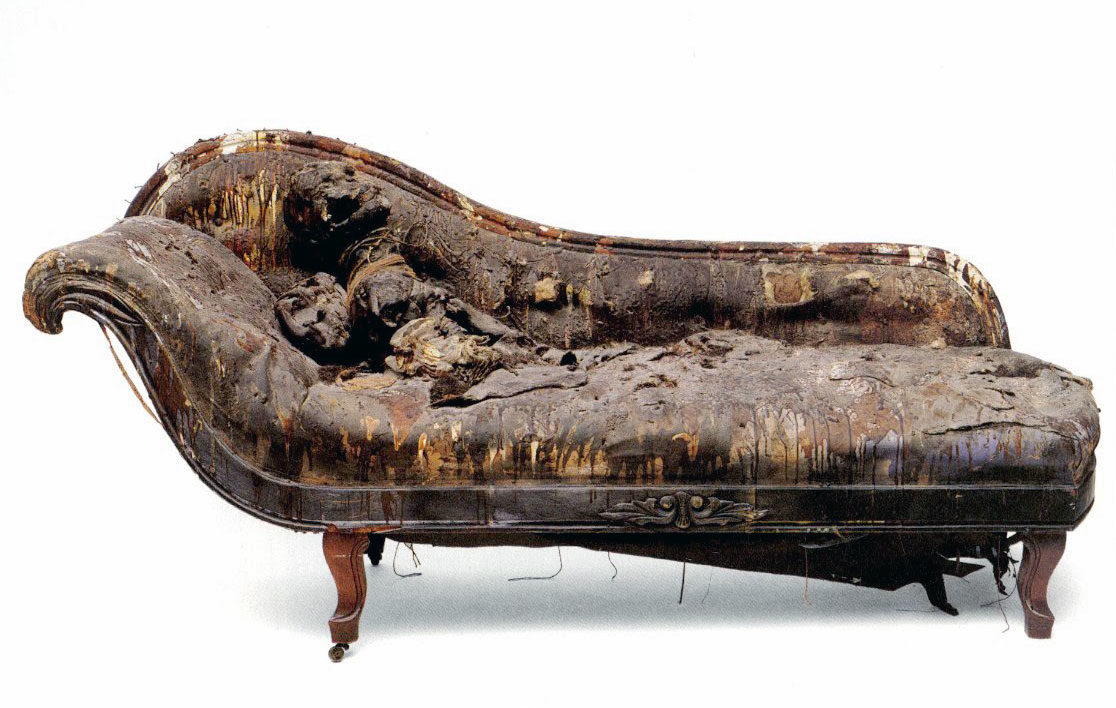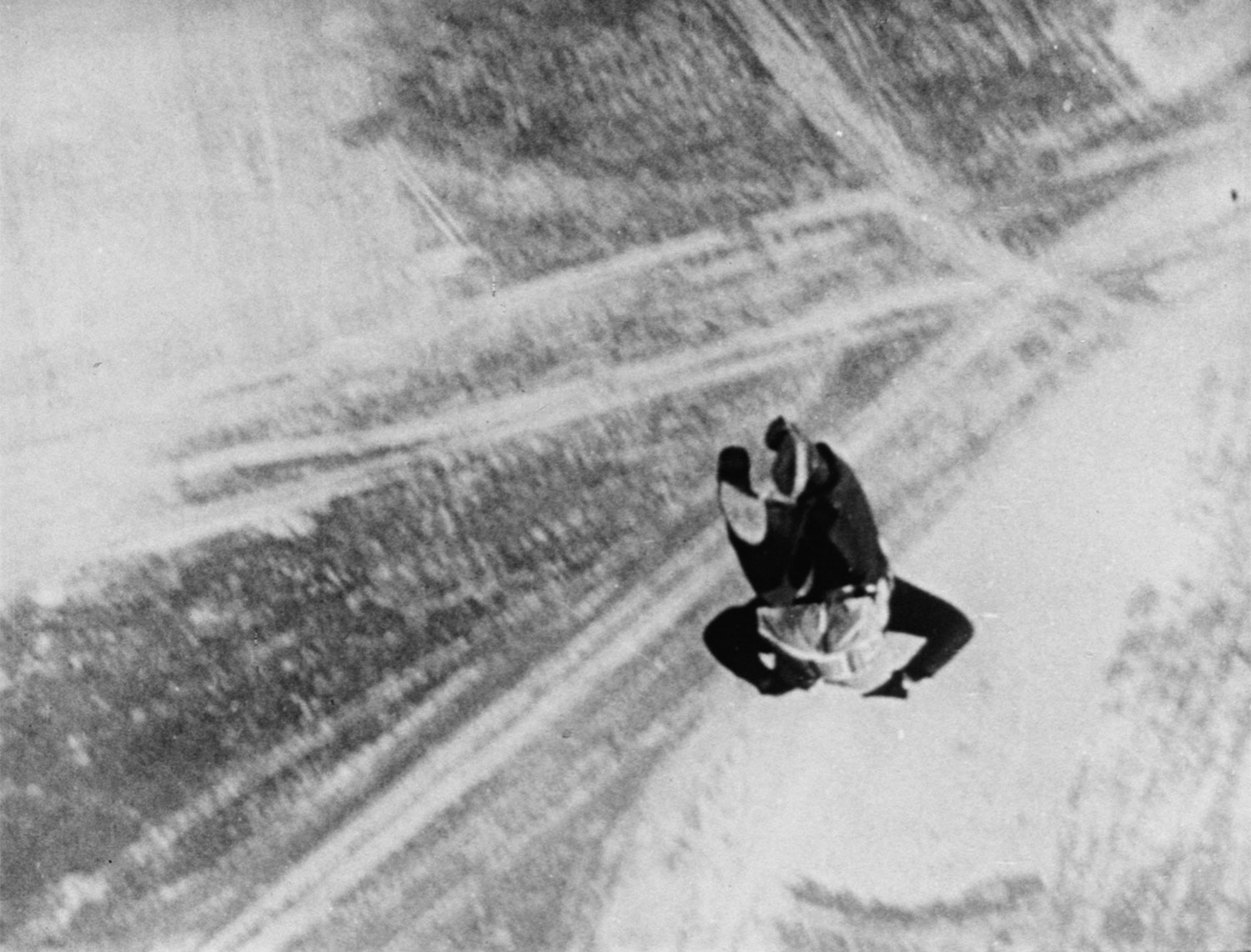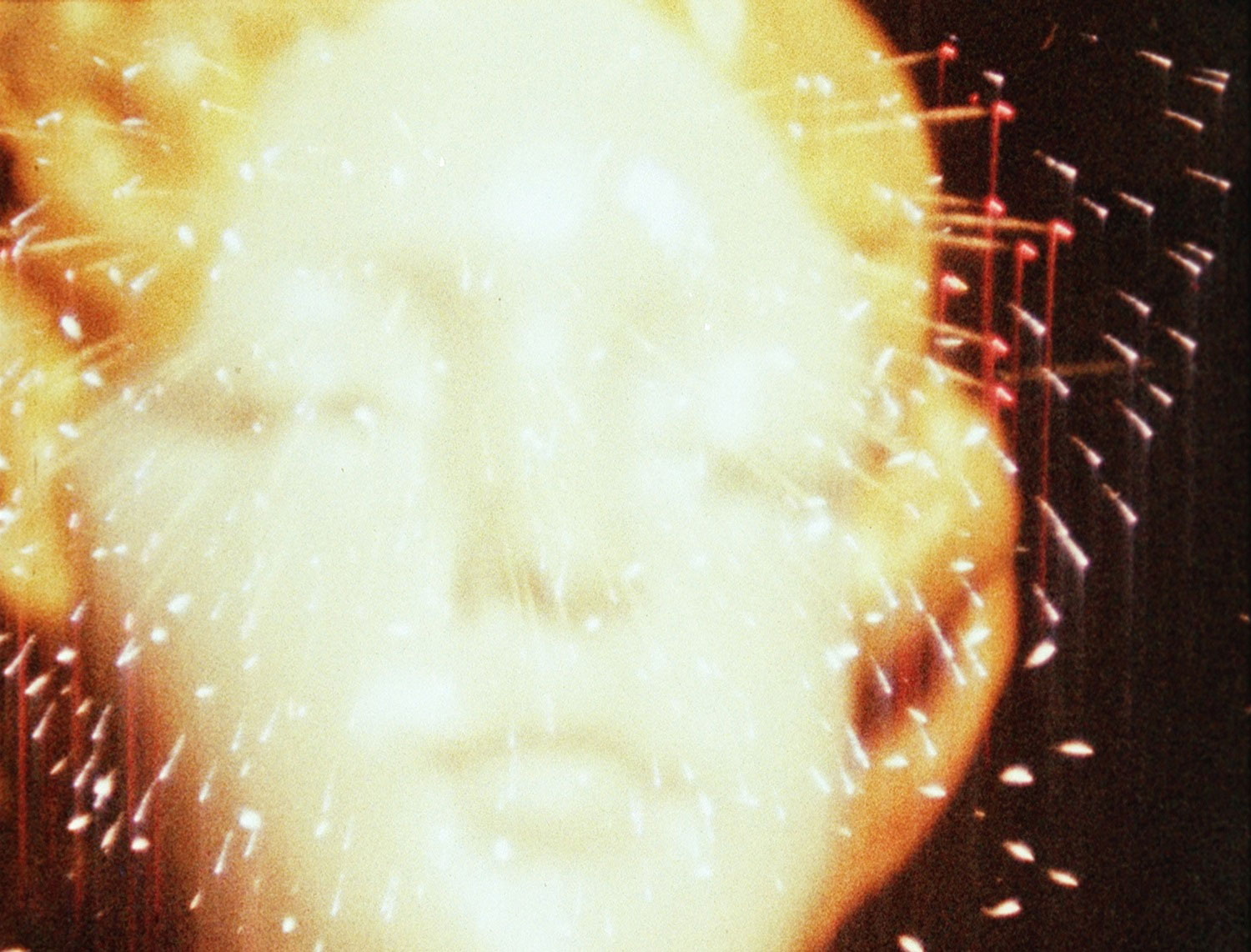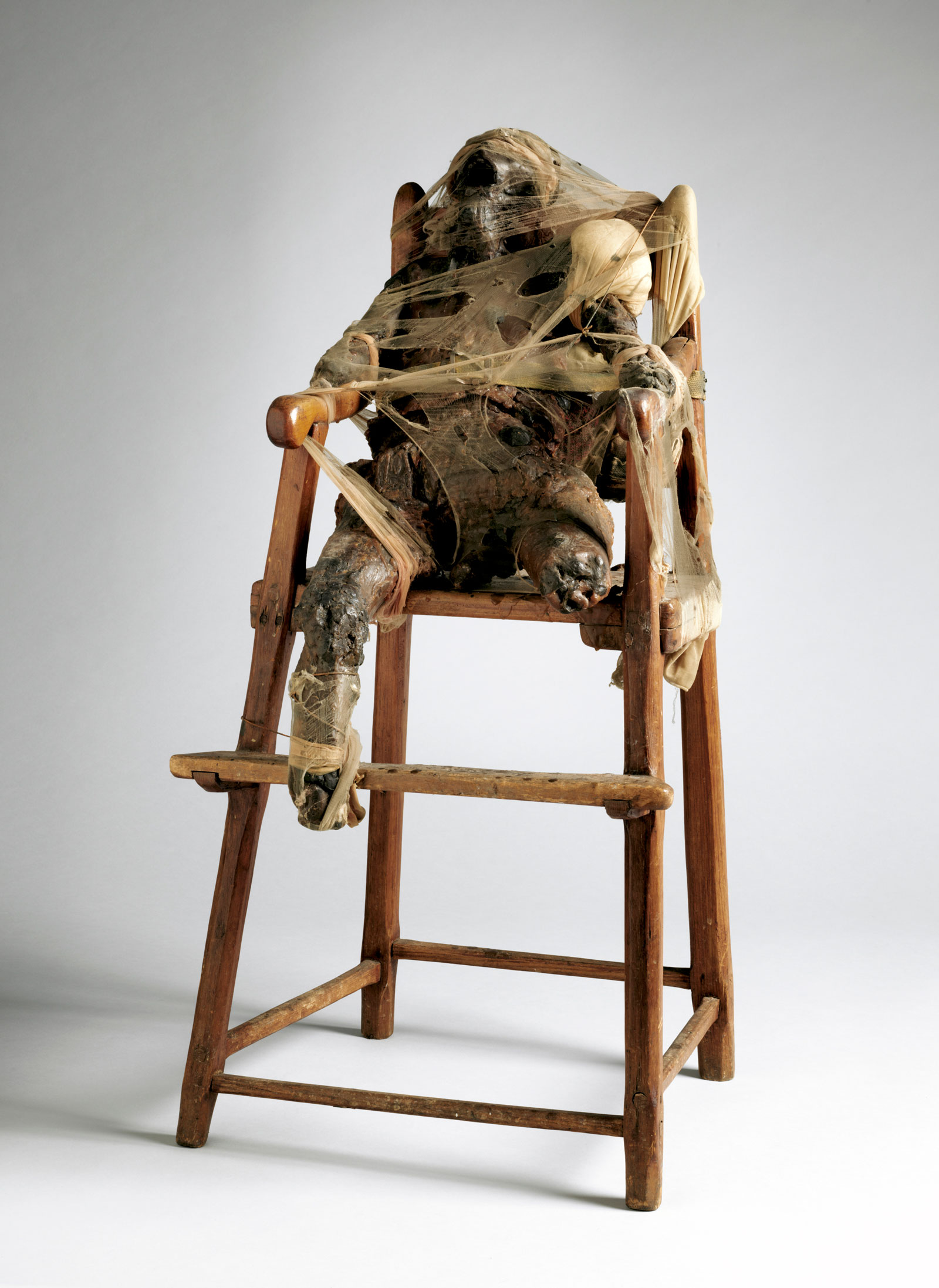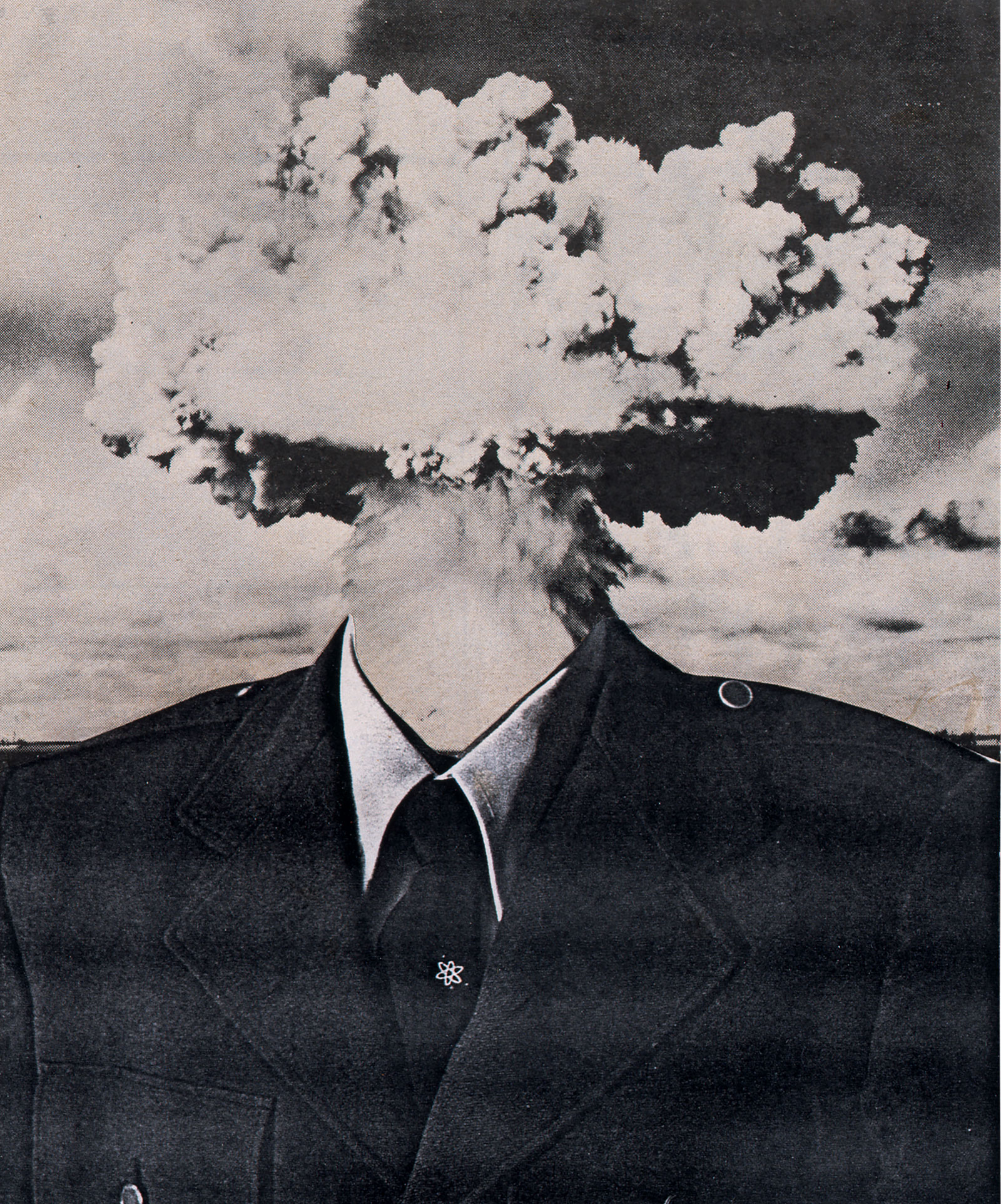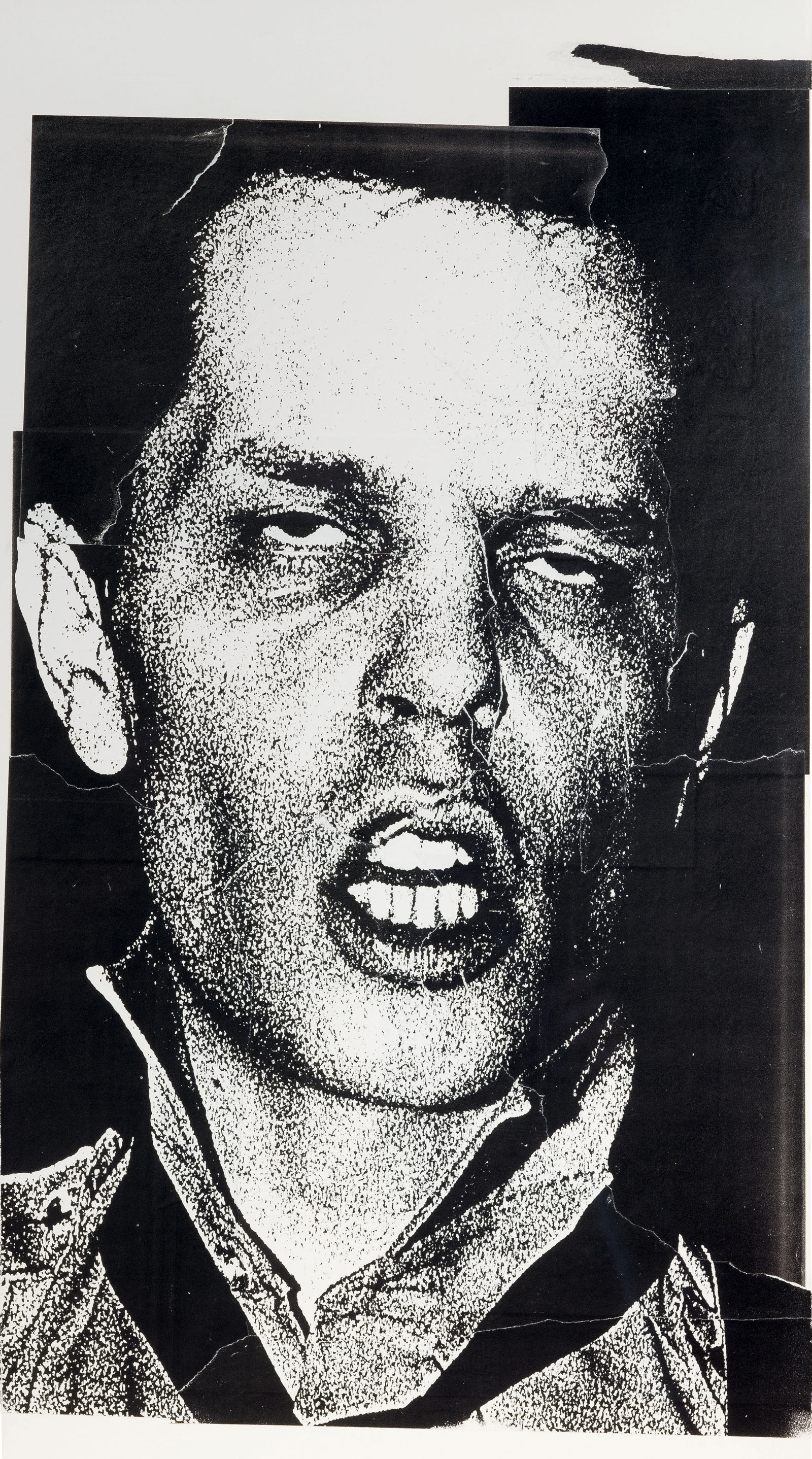“It’s All True,” the title of the Museum of Modern Art’s powerful retrospective of the American artist Bruce Conner (1933-2008), comes from a letter Conner wrote to one of his gallerists in the aftermath of his only previous museum retrospective, organized by the Walker Art Center in Minneapolis in 1999:
My work is described as beautiful, horrible, hogwash, genius, maundering, precise, quaint, avant-garde, historical, hackneyed, masterful, trivial, intense, mystical, virtuosic, bewildering, absorbing, concise, absurd, amusing, innovative, nostalgic, contemporary, iconoclastic, sophisticated, trash, masterpieces, etc. It’s all true.
How about “sinister,” “creepy,” and “indelible”? As a fifteen-year-old Pop Art aficionado wandering through the Whitney Museum’s 1964 Sculpture Annual, I discovered Conner’s work in the form of the assemblage Couch. There was no warning. It was like rounding a corner and bumping into Death or seeing the title Faster Pussycat! Kill! Kill! on a 42nd Street marquee. I couldn’t believe my eyes.
Claes Oldenburg’s rough, pillowy Soft Wall Switches (one of the only other pieces I remember from the show) was something I could understand as art. Couch was something else—a derelict remnant of a nightmare haunted house. Conner took a moldering, paint-spattered, wax-encrusted Victorian divan and managed to imbed it with a child-sized mummy. The simulated, decomposed corpse was nestled into a corner. On closer inspection, it looked as though it might have been strangled.
Back then this gothic horror struck me as a prop from Hitchcock’s Psycho (1960). I didn’t know yet that Conner himself was already the author of a great movie, namely A Movie (1958). The centrality of his precocious masterpiece, made at age twenty-five, is something “It’s All True” recognizes by giving it pride of place—A Movie is the show’s first attraction, not digitalized on a tiny monitor, but projected in 16mm on a large screen.
Conner changed the cinematic equation the first time he picked up (or rather, didn’t pick up) the camera. Every image in A Movie’s twelve-minute assemblage, except for the title card (“A Movie by Bruce Conner”), is secondhand—culled from newsreels, travelogues, stag films, and academy leaders. A Movie is—as Umberto Eco famously wrote of Casablanca in his essay on cult films—not one movie but The Movies.
Commonplace today, the notion of making a film from found footage had hardly been tried at the time. A Movie’s only real precursor was Joseph Cornell’s 1936 Rose Hobart, fashioned almost entirely from the Hollywood potboiler East of Borneo. Virtually unknown, it too was produced by a maker of assemblages and connoisseur of detritus.
Like Rose Hobart, A Movie is an exemplary film object, as well as an exercise in academic montage, a low-rent disaster flick, and a joke on the power of background music, in this case the incongruous use of Ottorino Respighi’s orchestral work “Pines of Rome.” It was initially screened as part of Conner’s first one-man show at the East and West Gallery in San Francisco in 1958. The artist intended for A Movie to be presented as a rear-projected continuous loop but lacked the technological wherewithal; it was shown as a “normal” 16mm film.
So it is at MoMA, although it also functions as an installation. Respighi’s sprightly piece wafts into the gallery devoted to Conner’s early paintings (rough but accomplished mainly monochromatic abstractions, some making use of gold leaf) and his notorious assemblages. Conner became a precocious art world star for these texturally repulsive junk conglomerates (candy wrappers, cigarette butts, rubber piping, at this point more disturbing to conservators than gallery-goers), often bound together by a web of ripped nylon stockings. A strange new beauty indeed!
Couch may be found among these, in a niche where it is grouped with the most notorious of Conner’s early works, Child (1959-1960). The subject of a fascinating essay in the show’s hefty catalog, Child was offered as a donation to the Museum of Modern Art in the early 1960s and, after much controversy, finally acquired in 1970, and subsequently put safely in deep storage. This is the first time it’s been exhibited by the museum (though it has been shown at others). The piece could be described as a mutilated baby corpse strapped into a wooden high chair and shrouded in a petrified nylon-stocking cocoon. The niche also includes several black wax sculptures redolent of crucifixion and resurrection. A wall card explains that the artist wanted these pieces exhibited together as a “Little Museum of Horrors.”
Advertisement
Conner largely abandoned assemblages in the early 1960s. It’s sometimes said that if he had continued in this mode (and continued to exhibit in New York) he would now be bracketed by Rauschenberg and Johns but in fact Conner was too anarchic and contrarian a personality to be easily assimilated into the art world. From making objects, he switched to graphic work. These include intricate drawings, sometimes called mandalas, that were variously redolent of Rorschach tests, amphetamine, and the Cabala; as well as ghostly photograms, photographic work and collages documenting San Francisco’s late 1970s punk scene, and, in the late 1980s, a series of found engraving collages reminiscent of Max Ernst’s. Mainly, however, Conner made movies, some of which, like the 1978 film set to Devo’s “Mongoloid” or the 1981 piece scored by David Byrne’s “America is Waiting,” could be seen as art-world music videos—a form that Conner more or less invented.
The five-minute Cosmic Ray (1962), his enormously influential follow-up to A Movie, was the original underground blockbuster—a frantic found-footage-plus-gyrating-naked-woman montage set to Ray Charles’s ecstatic What’d I Say. Establishing Conner as the poet of sexual frenzy, Cosmic Ray anticipated the MTV aesthetic and, since it was first shown as a multi-screen projection piece installation at San Francisco’s Batman Gallery, also anticipated the cinema installations that are now commonplace if not ubiquitous. Douglas Gordon’s 24 Hour Psycho (1993) and Christian Marclay’s The Clock (2010) are exemplary instances of Cosmic Ray’s descendants.
“It’s All True” includes another: Three Screen Ray (2006, among Conner’s last completed works) puts Cosmic Ray at the center of a triptych, flanked by two other films that recycle similar material. The dancer Toni Basil, subject of Conner’s hyperkinetic portrait Breakaway (1966), a movie that might be considered the essence of the mid 1960s TV show Shindig!, is something like a benign Kali wildly spinning and flailing amid all manner of found material (mainly relating to war, sex, and Mickey Mouse).
Conner was interested in rock music, subcultures, and offbeat celebrity (he collaborated several times with Dennis Hopper on photographs and conceptual art jokes). His densely edited Report (1965) is a found-footage collage incorporating all matter of documentation of the Kennedy assassination as well as super slow-motion images of a bullet shattering a light bulb and the laboratory scenes from The Bride of Frankenstein. But sex and sleaze not withstanding, Conner’s most sustained artistic subject was the atomic bomb, as featured in his longest and most majestic film, the thirty-six-minute Crossroads (1976).
Nuclear explosions figure in A Movie, Cosmic Ray, and Report as well as a number of drawings and collages. (Amid the crises of the early 1960s, Conner and his wife Jean left the US for Mexico, planning to be there when, as he said, the Bomb dropped.) In the context of “It’s All True,” the “Little Museum of Horrors” pieces, especially Couch and Child, cannot but evoke the incinerated corpses of Hiroshima and Nagasaki. Crossroads, which is projected in its own room behind a closed door, is terrifying in another way—the mystery at the heart of “It’s All True.”
If “3 Screen Ray” is a triptych, Crossroads is an altarpiece. Shown in a museum, it seems like an exemplary—and rare—instance of twentieth-century religious art. Like A Movie, Crossroads is entirely fashioned from found footage, namely previously classified US government documentation of the first post World War II atomic test at Bikini Atoll during the summer of 1946.
The footage, some of it originally shot in super slow motion at 8000 frames per second, has been selected and organized but in no way manipulated, save for the addition of a soundtrack. (An audio collage fashioned by Patrick Gleason on a Moog synthesizer gives way to a dreamier drone composition performed on an electric organ by Terry Riley.)
Crossroads consists of twenty-four shots, ranging in duration from a few seconds to a final one of six and a half minutes, during which time appears to stand still. The movie’s dozen or so billowing mushroom clouds—fantastic geysers of vaporized water erupting a mile high out of the ocean, often the same explosion film from differing angles—are a sort of visual mantra. The word “awe-inspiring” barely communicates the cumulative sense of wonder and dread. To sit through Crossroads is to experience what the poet Frances Ferguson called the “nuclear sublime” or appreciate why, after the successful Trinity test of the atomic bomb, J. Robert Oppenheimer might have recalled a passage from the Bhagavad-Gita: “Now I am become Death, the destroyer of worlds.”
Advertisement


